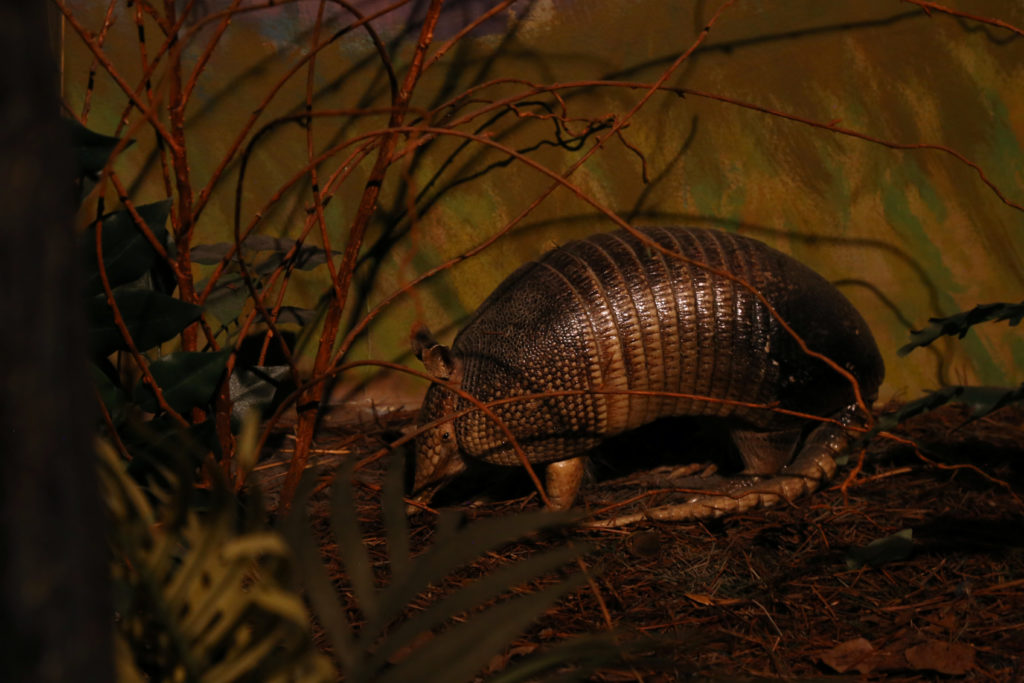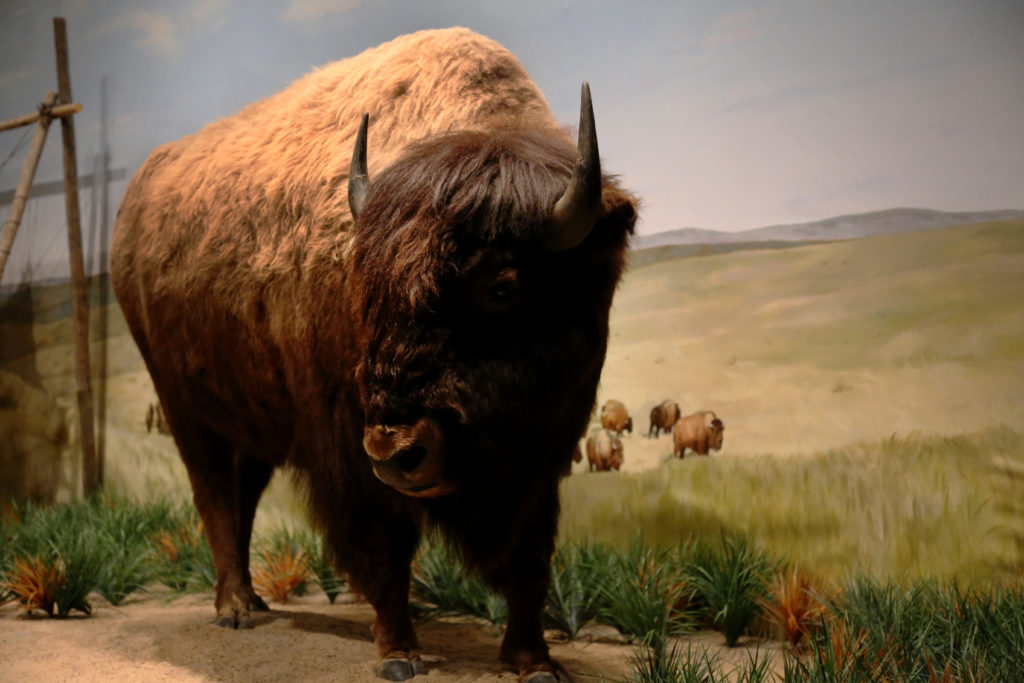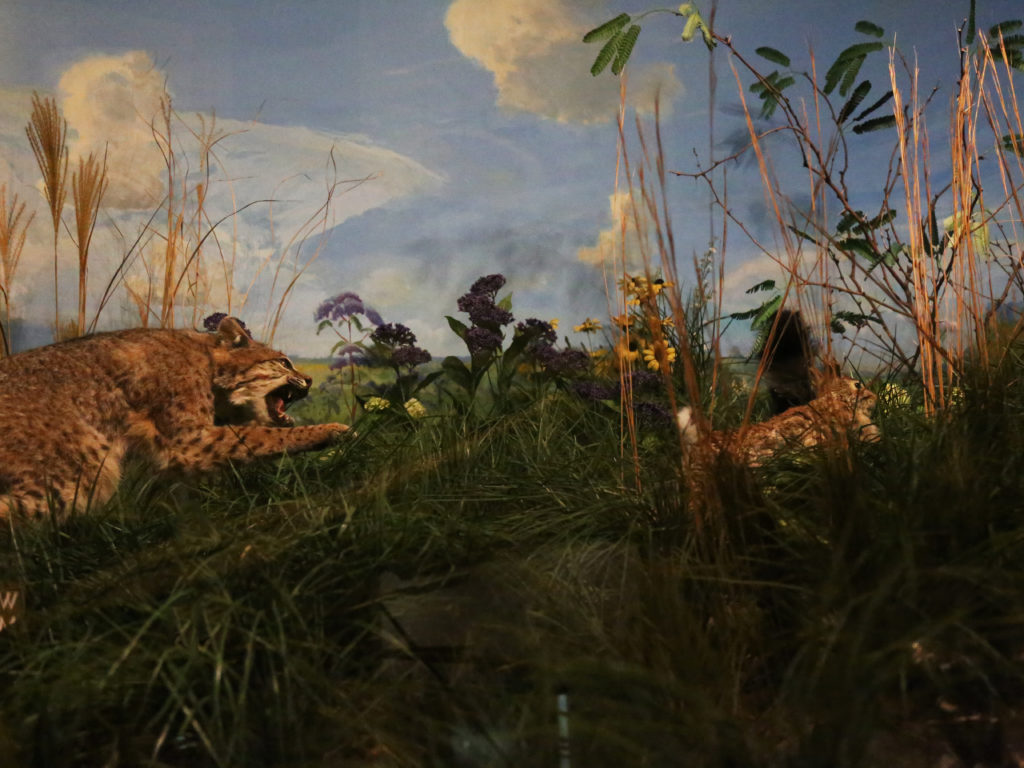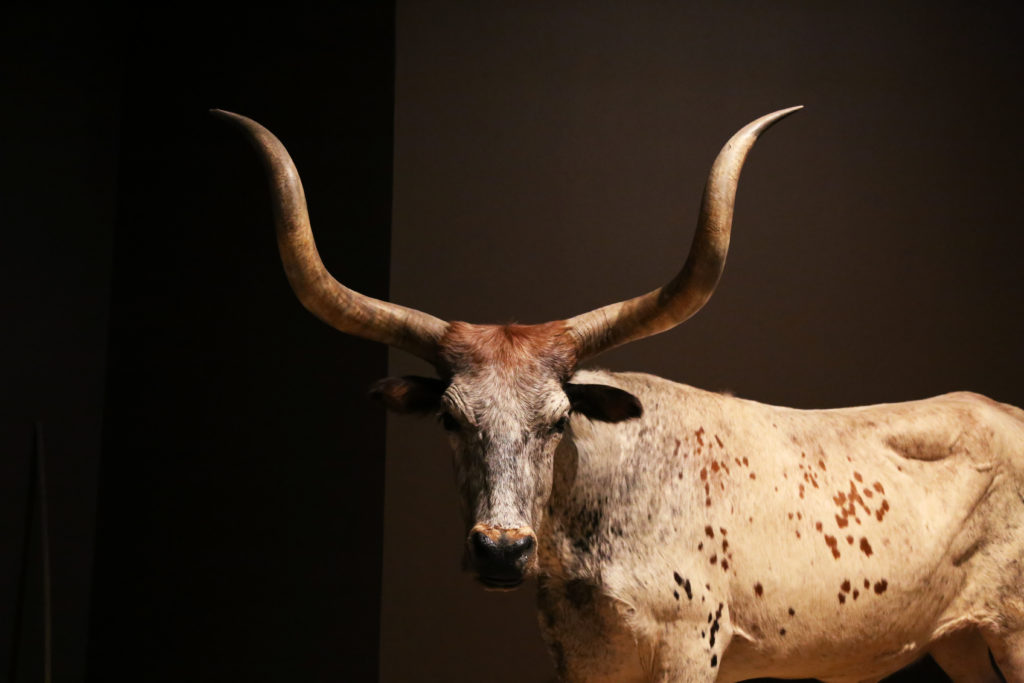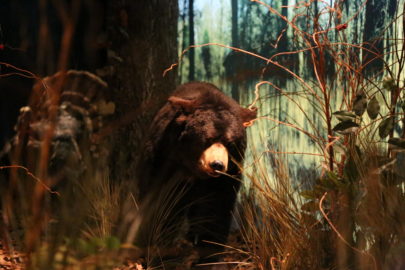Story by Paige Phillips & Photos by Audrey La
The Legacy of Waco’s Taxidermists
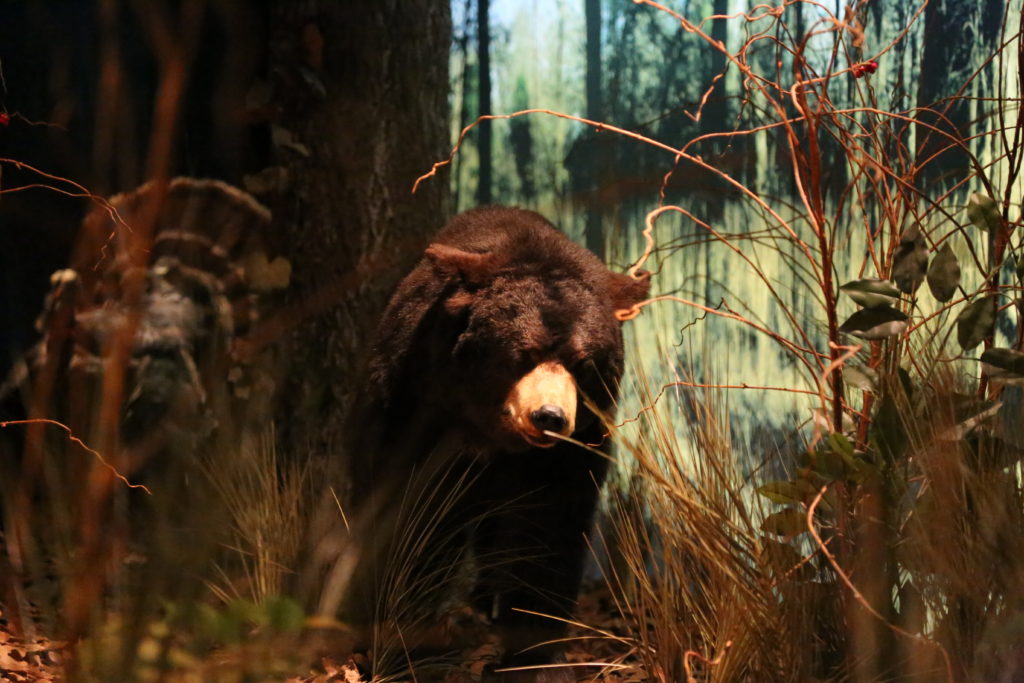
It’s hard to drive though Waco without noticing the numerous taxidermy shops. This certainly makes sense in a rural area with plenty of ground for hunting, but the climate in Waco is changing. Since becoming a tourist destination due to the popularity of the HGTV series “Fixer Upper,” Waco is rapidly gaining more trendy forms of food and entertainment. Add to that the large college population and Waco is quickly becoming a city with a younger demographic. Vegetarian Times reported that 42% of vegetarians are 18-34 while only 17% are over 55. The newest generation is becoming more interested in diets such as vegetarianism or vegan-ism leading them to be less inclined to purchase animal products in Waco. Which begs the question, what will be the legacy of taxidermy businesses in the future?
Jernigan’s Taxidermy is one local business that boasts over 40 years as a full-service taxidermy shop. In addition to taxidermy, they also have an in-store knife business which ranges from hunting and carving knives to pocketknives even to standard kitchen knives. However, they maintain their primary business in taxidermy. They are adept in adorning businesses such as restaurant, hotels and night clubs. This makes for a diverse range of customers. Prominent ones include a cigarette conglomerate, a home-style-cooking restaurant, an award-winning barbecue restaurant, a mainstream movie studio and a Las Vegas casino.
One thing to notice while in the store is the large number of steer horns, this is because they have a completer steer horn manufacturing system of both polished and unpolished steer horns. Since Texas longhorns’ horns are somewhat unique compared to the horn of an average bull, the horns make for a good feature for those who seeking a distinct western look for their restaurant, home or movie studio. As well as selling already mounted pieces, they also do commissions for those who wish to mount a trophy.
Premade pieces tend to range from $50 to $600 dollars while commissioned pieces can run from $95 for white tail deer horns to $5,000 and up for a full body mount of a brown bear, not exactly Ikea prices but with more meaning and value to the customer. Although they no longer do commissions for birds or fish, this certainly doesn’t limit them more common deer head mounts. Some pieces seek to imply action, such as a mounted badger grabbing a snake in his mouth.
Other mounted animals tended more to the comedic side, such as an armadillo drinking from a beer bottle or a squirrel rowing in a small canoe. There was not a classically unusual specimen like a jackalope, however there was a thermometer mounted on a deer foot. The staff was kind and willing to answer any questions and keeps relatively busy, profiting off the legacy they have already built serving the greater Waco community.
The path to leaving a legacy as a taxidermist is not a path that is tread on lightly. The work involves preserving dead animals by crafting models from their preserved skin. The creative process can go one of two ways. Either the taxidermist strives to make the animal look as close to alive as possible, or they go more of a fantasy route to make an imaginary animal incredibly realistic, such as the jackalope.
A meticulous craft, good taxidermy is a skill that requires both a detail-oriented personality and creative inspiration. Without knowledge of animal anatomy, it is difficult to be detail oriented when working with dead animals. Although taxidermy does not require a formal degree, classes in biology and anatomy gives beginners a head start. A degree in biology, fine arts, or business is even more useful to this end. Skills in carpentry, woodworking, tanning, molding, drawing, sculpting and casting are essentials to the actual process. The actual process requires a strong stomach as taxidermists must remove the skin from the animal and replace their insides with a mold. This process often includes the use of a harsh chemicals such as borax or formaldehyde to preserve the body.
Many taxidermists consider their work an art. Similar to many artistic career paths, taxidermy requires both on-the-job training and hours of practicing. Many states require a state taxidermy license. While Texas does not, taxidermists in this state are required to maintain certain records and are restricted from the sale or possession of certain protected species. In lieu of a license, The National Taxidermy Association supplies professional certifications to help those seeking an entry into the profession. Another way to get some experience is to apprentice with an established taxidermist. Like many industries of the past, the legacy of taxidermy is intertwined with the value of mentorship. Work as a taxidermist pays around $30,000-$50,000 a year. While many taxidermists are simply making a living and growing their business, some taxidermists use their skills to demonstrate their work in educational and artistic fields.
One taxidermist who embarked on the path not only to make a living but to leave a legacy was Jan Van Hoesen. Van Hoesen entered the competitive taxidermy world with a flurry of wins at state, national and international levels. Winning awards both from the judges and People’s Choice awards, Van Hoesen brought something special to the table, according to her peers. With poses not seen before in taxidermy works and her small mammal pieces, Van Hoesen had accomplished what all taxidermists strive for but few succeed at. Van Hoesen had captured the rare essence of the species. One famous example is Van Hoesen’s 1992 bobcat, a World Champion, in which the bobcat is reclined on its back in a mossy bank and is twisting its head to look inquisitively at the viewer. Far from a carcass the bobcat appeared to be truly alive. Some had to check the chest to make sure it wasn’t breathing. Van Hoesen had a secret, however. She had a special method of understanding the smallest detail of the form, function, and focus of the lives of these animals. At her home, she kept dozens of live animals. These included bobcats, lynxes, raccoons, foxes and coyotes. Van Hoesen’s grasp of the essences of these species was based on her daily personal interaction with her cohabits, taking inspiration from life to give their long-lasting legacy in death appear to have life.
If taxidermy is an art whose goal is to capture the essence of the species, and one of the best way to truly capture that essence is to be around live animals, it begs the question: Why do any animals have to die for this art in the first place? One could argue that no animal lasts forever but a mounted animal could carry the essence of the species to many generations. But that still leaves questions that many animal supporters must reconcile. To explore this point of view more in depth, here are the insights of Madisyn Puangco, a Baylor sophomore and vegetarian.
What is your opinion of the general taxidermy industry?
I, personally, do not see the appeal in the taxidermy industry. I believe that the animals that are being killed and displayed as taxidermy could easily be observed in the wild instead where they would not be harmed.
What is your opinion of stuffed animals used for educational purposes such as museums?
I think that artificial stuffed animals are a great resource to use for educational purposes as students are able to see up close what a wild animal looks like and its anatomical structures.
Artificial stuffed animals would be a good non-taxidermy resource for museums. It even could be possible that taxidermists could use the same skills they use with living animals to graft fake fur to a Styrofoam mold. However, many museums still have real animals that have been processed by a taxidermist. Notably the Museum of Natural History, there is a hall full of taxidermy animals. While all the animals in the hall are real, most of them had died of old age before being donated. This alleviates a lot of concern held by those creped out by the exhibit. The goal of the exhibit was to demonstrate the vast variety of mammals on earth. It intends to endear the visitor to the animals by allowing them to see in the details the similar details such as hairs, skin, and ears that make them not so different. It is important that humans can develop a respect for animals in order treat them fairly. With the artificial technology that is available today it is possible that the connection wouldn’t be the same as it is with what was once a living animal.
The exhibition’s rare animals that are not often available to go outside and find, are animals like the Chinese pangolin, an armadillo-like creature, and a pink fairy armadillo and the mole-like addition of the armadillo. Upon reading about the Chinese pangolin, one woman said, “It uses the skin on its back to seal up its burrow like a bunghole.” It is interesting to note that preserved human bodies aren’t exempt from museum display either, the mummies and ice men always cause a stir. While legacy of an animal who lived once is more meaningful that of an object that was never alive, but the cost of cutting the animals life short should be heavily considered.
How do you feel about people hunting and then stuffing the hunted animals as trophies?
I do not like nor do I condone the hunting and killing of animals for trophy purposes. Dead animals should never be seen as trophies as trophies insinuate a competition, but there could never be a competition between a wild animal and a human with a weapon. There is no “winner” in this competition and therefore I do not approve of dead animals being used as trophies.
What about people stuffing roadkill animals or their pets who have died naturally?
People who stuff roadkill and/or their pets that have died naturally are not doing anything wrong, in my opinion, because the animals died of natural causes. These people are simply preserving animals that were not harmed purposefully.
Some taxidermists, such as Amanda Sutton, only do business with reptile feed, roadkill, and animals that died of natural causes. She creates taxidermy to preserve the beauty of the animals.
We’ve talked a lot about taxidermy as a skill or method to preserving an animal’s essence or legacy and little about it being harmful and hurtful to animals. Although there are many reasons different reasons for taxidermy, one of the most common is as hunting trophies. To capture a hunter’s perspective, I interviewed Chancellor Wimmer, a local hunter.
Do you think taxidermy can be an art form?
Madisyn: I do not believe taxidermy should be considered an art form because any art form involving animals should be observing that animal in its natural habitat, alive and breathing. That is real art, not lifeless eyes and bodies being mounted on someone’s wall.
Chancellor: I don’t know if it could be considered art but maybe a way to show off or even purchased second hand to decorate.
Do you think there is a way taxidermists can market to newer generations that are drifting away from animal products?
Madisyn: I do not think there is a way for taxidermists to market their products to generations that are straying away from animal products because taxidermy is an animal product in and of itself. As a result, I do not think anyone who does not use animal products would be interested in purchasing taxidermy.
Chancellor: I don’t think taxidermists are reaching out to newer generations or need to, I still see plenty of people getting animals taxidermized. The people who are involved in hunting will always know about taxidermists and have an interest.
What kind of taxidermy products have you gotten done? Why did you want to have them? Do you have any experiences with taxidermists in Waco?
Chancellor: My only taxidermy is a Mallard duck my grandpa surprised me with after my first successful hunt, and it was done in South Carolina. So I don’t have any experience with taxidermists in this area.
The legacy of local taxidermy will be determined by the future. As it now stands it is interesting that while studying the taxidermy industry and talking with local stores, most if not all taxidermists would call themselves artists. However, two young people of opposite ends of the spectrum on this issue both agree that taxidermy does not appear to be an art form. Perhaps taxidermists leave their mission statements more on the interior, not wearing their “essence of the species” on their sleeve.
They say art imitates life, but does it still ring true when art is imitating life through death?
Their creative legacy aside, the taxidermist’s business legacy depends on death imitating life well enough for it to hold value to someone. If taxidermists don’t need to reach out to newer generations and can always rely on the business of hunters, then their legacy could continue indefinitely.
However, if the hunter population dries up is it hopeless to reach newer more animal conscious generations? There are other ways that taxidermists can redirect their business and artistic skills. Like Amanda Sutton, they can ethically source their business for animals that were not killed for this singular purpose. They could help make advancements in realistic artificial animal models. They could even try their hands at preserving a vegetable, there’s a huge market for rotting proof pumpkins this time of year. Today, the customer base for taxidermy is still strong in the hunting and exhibition industries. However, even if that were to change, there appears to be multiple alternative routes for taxidermists to still leave a legacy for the future for their craft.
